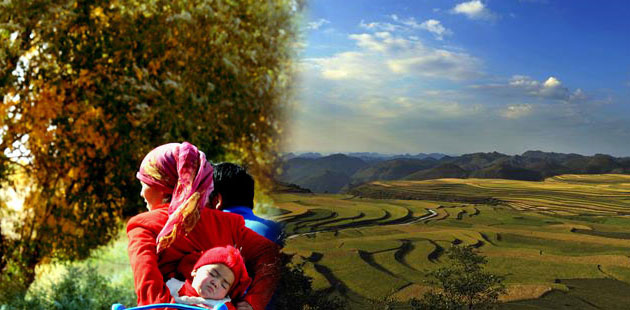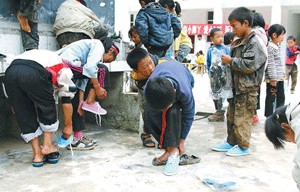Eco-conservation zone for Qinghai-Tibet plateau
Updated: 2011-11-18 15:39
(Xinhua)
|
|||||||||
XINING - China is planning to set up a landmark ecological conservation zone on the Qinghai-Tibet Plateau, where the country's major rivers originate.
The planned national conservation zone covers a 395,000-square-km region known as Sanjiangyuan, which is the source of China's three major rivers: the Yangtze, Yellow and Lancang rivers.
The zone will cover 21 counties in four Tibetan autonomous prefectures in Northwest China's Qinghai province, as well as the town of Golmud, a pivotal stop on the way to Tibet's capital of Lhasa.
The plan, endorsed at an executive meeting of the State Council, or China's cabinet, on Wednesday, is aimed at increasing average vegetation coverage in the region by 25 to 30 percent by 2020.
The move is designed to restore the ecosystem in the Sanjiangyuan region and boost local residents' incomes, according to the plan.
A researcher with the Qinghai Academy of Social Sciences described the move as a signal that China is willing to take responsibility and contribute to the global fight against climate change.
"Adequate protection of ecology is a vital issue for China and the world," said Sun Faping, the academy's vice president.
Asia's Water Tower
The Sanjiangyuan region is known as "Asia's water tower," as the rivers originating from there reach at least 600 million people living around the continent.
The region's fragile plateau ecology has deteriorated over past decades. Pastures have degraded, rats are a frequent nuisance and lakes have shrunk or even completely dried up.
Scientists have blamed the deterioration on global warming and human activity, including overgrazing and a rapid population increase.
In 2005, China launched a 7.5-billion-yuan ecological conservation project in the Sanjiangyuan region, hoping to repair the ecological system and transform the area into an unpopulated nature reserve.
The project involves a massive relocation of 50,000 people, mostly Tibetan herdsmen, as well as clean energy development and the reclamation of cropland.
An appraisal by the Chinese Academy of Social Sciences showed that the project has effectively prevented the plateau's ecology from worsening.
"Surveillance data showed that an average 56.435 billion cubic meters of water flowed out of the region annually from 2005 to 2010, compared with 47.7 billion cubic meters in 2004," said Li Xiaonan, deputy director of the Sanjiangyuan Ecological Preservation and Construction Office.
Meanwhile, the region's major lakes have swelled by 245 square km, he said.
A once-dry lake in the Golog Tibetan autonomous prefecture is now at least 10 meters deep. "In 2005, the lake had almost dried up and vehicles could drive on its exposed bed," said Li Dawei, a local water conservation official.
Average vegetation coverage in the Sanjiangyuan region increased by an average 3.08 percent from 2005 to 2010. In major forestation zones, the increase topped 10 percent.
Matters of Migration
The well-being of migrants from Sanjiangyuan also calls for attention and policy support.
"Many former nomads live on on government subsidies because they lack the skills to earn a living," said Chamdri, a 54-year-old Tibetan who was one of 50,000 people who had to leave Sanjiangyuan six years ago and settle down in a town located 500 km from their ancestral home.
"We hope the government will work out more preferential policies to support us," he said.
To help the herdsmen adapt to urban life, the provincial government has offered vocational training and set up a special fund to encourage them to run small businesses. But few migrant communities have established marketable businesses.
While securing a job and surviving in a new environment will remain a challenge for the former nomads, Sun Faping said it might take two or three generations to solve all the problems the migrants are facing.
"We hope the central government will work out the country's first-ever compensation plan for migrants who have left their ancestral homes to make way for ecological restoration," said Zhang Yande, chief of Qinghai's soil and water conservation bureau.











